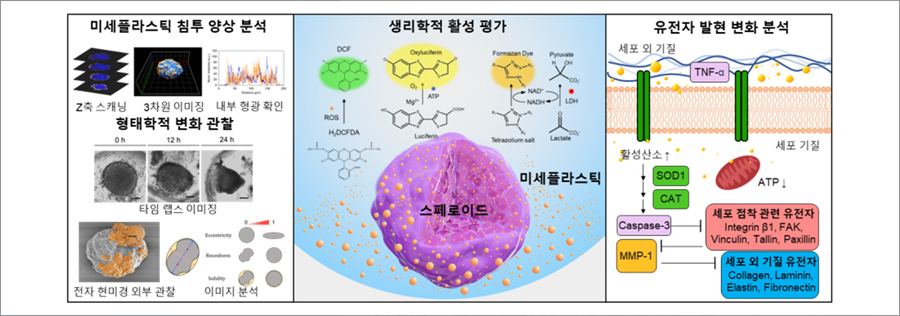Prof. In-Hee Choi's research team at University of Seoul discovered potential risks of microplastics to skin health

- Published in the Journal of Hazardous Materials, an international journal in the field of environmental science
- Selected as one of the 'People Shining Korea' by the Biological Research Information Center
A research team(first author Sung-hyun Uhm) led by Dr. Inhee Choi of the Department of Life Sciences at University o Seoul (President Won Yong-gul) recently published the results of a study on the potential dangers of microplastics to human skin, an environmental issue that has gained international attention.
The study was published in the world-renowned Journal of Hazardous Materials and has attracted attention from the academic community.

▲ Prof. Inhee Choi, Department of Life Sciences, University of Seoul (left, corresponding author) and Dr. Sung Hyun Uhm, MSc graduate (right, first author)
The research team utilized spheroids, a three-dimensional cell culture, to effectively assess the effects of microplastic exposure on real human skin using human skin-derived cells. The researchers found that the three-dimensional penetration patterns of microplastics and morphological changes in spheroids and their effects on several physiological activities, including adenosine triphosphate (ATP) production, were multifaceted.

▲ Representative illustration for dermal exposure assessment of microplastics
The team also identified an increase in extracellular matrix metalloproteinases (MMPs), which break down the extracellular matrix (ECM), which plays an important role in many functions of the skin, in skin-derived cells exposed to polystyrene microplastics that may be present in man-made products. This has implications for skin health as it loosens the connections between cells.
The research was supported by the Korea Research Foundation and the Business Technology Information Agency, and was featured in the Biological Research Information Center (BRIC)'s "People Who Shine in Korea" in recognition of outstanding research achievements on behalf of Korea.







